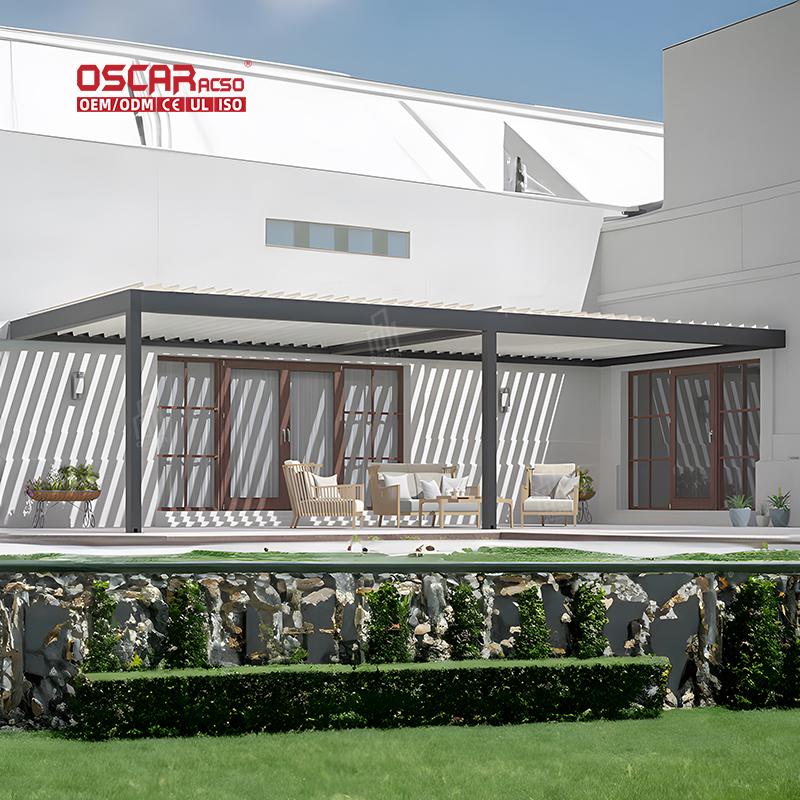Hurricane-Proof Pergolas: Build an Outdoor Oasis That Defies the Storm
Dreaming of a beautiful outdoor living space but worried about hurricane season? 🌪️ The question isn\'t just about shade ...
Dreaming of a beautiful outdoor living space but worried about hurricane season? 🌪️ The question isn’t just about shade and style—it’s about survival. While no structure is 100% “hurricane-proof,” a properly engineered pergola can be incredibly wind-resistant, allowing you to enjoy your backyard haven with peace of mind, even in storm-prone regions.
🤔 What Makes a Pergola Hurricane-Resistant?
It all boils down to three pillars: engineering, materials, and installation. A hurricane-resistant pergola isn’t just a DIY kit; it’s a meticulously designed structure built to meet specific wind load standards, often exceeding 130 mph. Think of it as a system where every component, from the footings to the fasteners, works in harmony to deflect and withstand immense wind forces.
💪 The Material Showdown: What Truly Holds Up?
Your choice of material is the first critical decision. Not all are created equal under pressure.
- •
Aluminum (The Champion 🥇): This is the top contender for high-wind areas. High-quality, reinforced aluminum pergolas are lightweight, corrosion-resistant (crucial for coastal salty air!), and can be engineered to withstand winds up to 130 mph or more. They offer the best balance of strength, durability, and low maintenance.
- •
Wood (The Classic Challenger): Traditional wood pergolas (like cedar or redwood) can typically resist winds of 50-70 mph. However, they require significant upkeep to prevent rot, cracking, and loss of structural integrity over time, making them less ideal for the most severe weather.
- •
Vinyl & Fiberglass (The Niche Players): Standard, un-reinforced vinyl is generally not recommended for high-wind conditions as it can be too light and flimsy. Fiberglass can offer good resistance (up to ~110 mph) but may become brittle in cold climates.
My take: For true hurricane zones, investing in a professionally engineered aluminum pergola isn’t just a choice—it’s a necessity. The long-term resilience outweighs the initial cost.
🛠️ Engineering & Design: The Secrets to Wind Deflection
Superior materials are nothing without smart design. The goal isn’t to create a solid wall against the wind, but to allow it to pass through efficiently.
- •
Louvers are a Game-Changer: Pergolas with adjustable louvered roofs are phenomenal for wind management. During storms, setting the louvers to a 45-degree angle allows wind to flow over and through the structure, drastically reducing wind load and the risk of uplift or collapse.
- •
The Power of Attachment: An attached pergola (secured to your home) often benefits from the stability of the existing structure, acting as a buffer. However, a properly anchored freestanding pergola with deep concrete footings can be just as resilient.
- •
The Foundation is Everything: Everything rests on the base. Deep concrete footings and heavy-duty, code-compliant anchors are non-negotiable. This is what keeps your pergola grounded when winds try to lift it away.
📋 Navigating Codes, Certifications, and Installation
This is where many homeowners stumble. Cutting corners here is an immense risk.
- •
Understand Wind Load Standards: In the US, the minimum wind load standard for structures is 105 mph. Any pergola you install must meet or, ideally, exceedthe specific requirements for your local building codes.
- •
Seek Miami-Dade NOA Acceptance: For the ultimate assurance, look for products that have achieved Miami-Dade County’s Notice of Acceptance (NOA). This is one of the most rigorous certifications for hurricane-prone areas and is widely recognized as a gold standard. It validates that the product has passed extreme wind-pressure and corrosion testing.
- •
Choose Your Installer Wisely: Never DIY a hurricane-resistant pergola. Always work with a certified, experienced contractor who understands local permit requirements and engineering principles. They will ensure proper soil sampling, footing depth, and secure installation.
Ask these questions:
- •
“Can you provide engineered drawings and pull permits?”
- •
“What is the specific wind rating of this structure?”
- •
“What anchoring and footing system do you recommend for my soil type?”
💡 Beyond the Structure: Pro Tips for Storm Preparedness
Even the toughest pergola needs a little help when a storm is imminent.
- •
Louver Position: As a storm approaches, open your louvers to about a 45-degree angle to minimize resistance.
- •
Clear the Area: Remove all movable objects like furniture, hanging plants, and decor that could become dangerous projectiles.
- •
Regular Maintenance: Inspect your pergola periodically for loose bolts, corrosion, or any wear and tear. A well-maintained structure is a resilient one.
💎 The Bottom Line: Is It Worth the Investment?
Absolutely. While the upfront cost for a hurricane-rated aluminum pergola with professional installation is higher, it’s an investment in safety, durability, and property value. It transforms your yard into a four-season living space you can enjoy without anxiety, knowing it’s built to last.
The key takeaway? You can have both beauty and brawn. By choosing engineered aluminum, prioritizing smart design like louvers, and investing in professional installation with proper foundations, you can create an outdoor oasis that stands strong against the elements. 🏡


